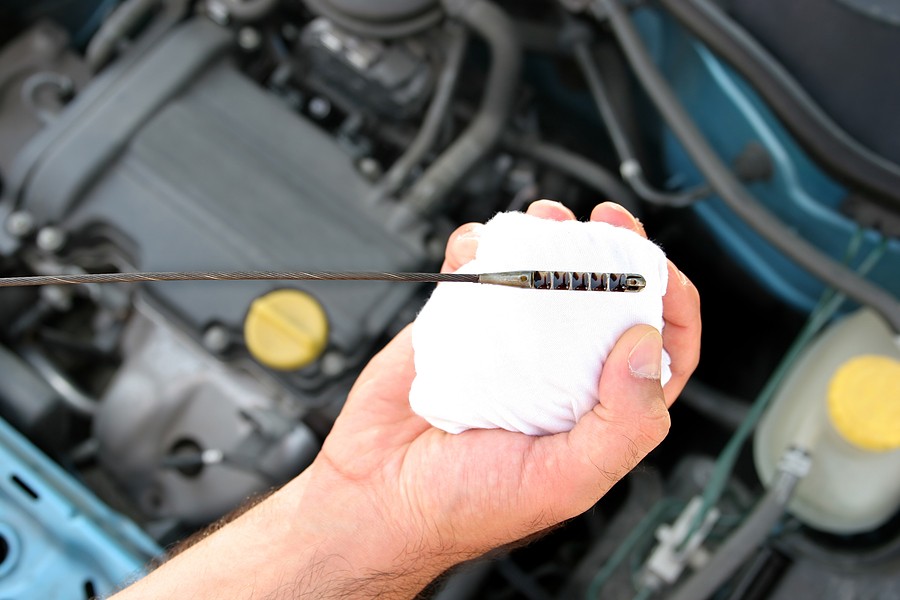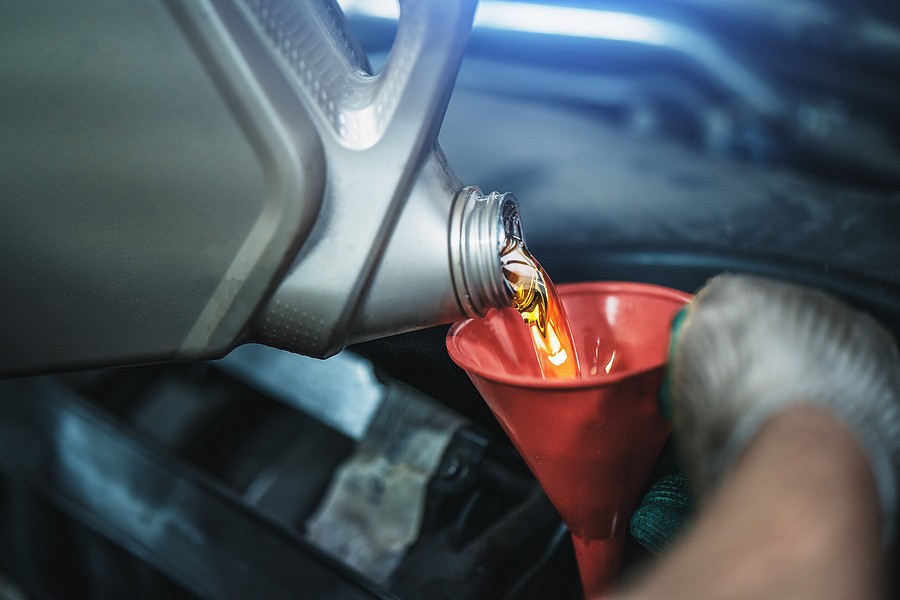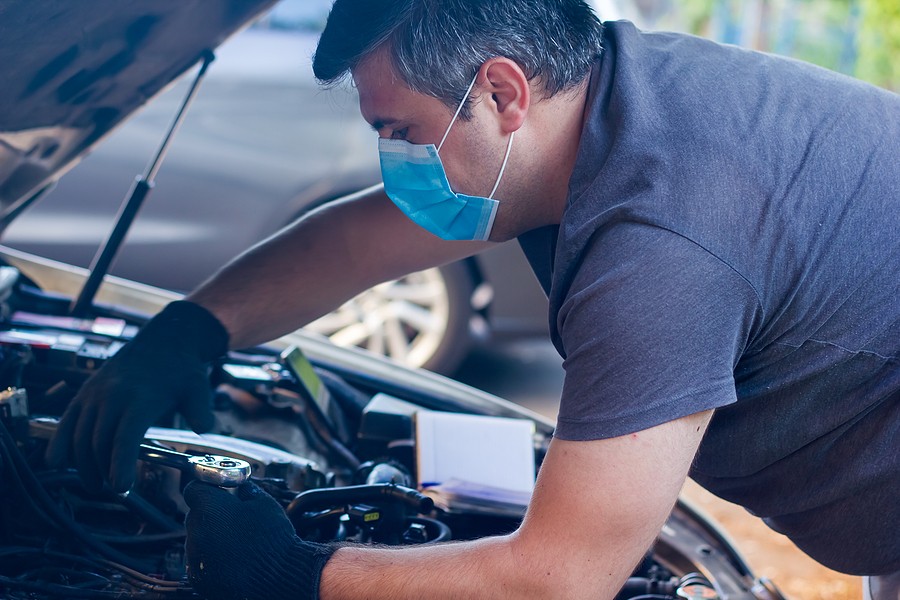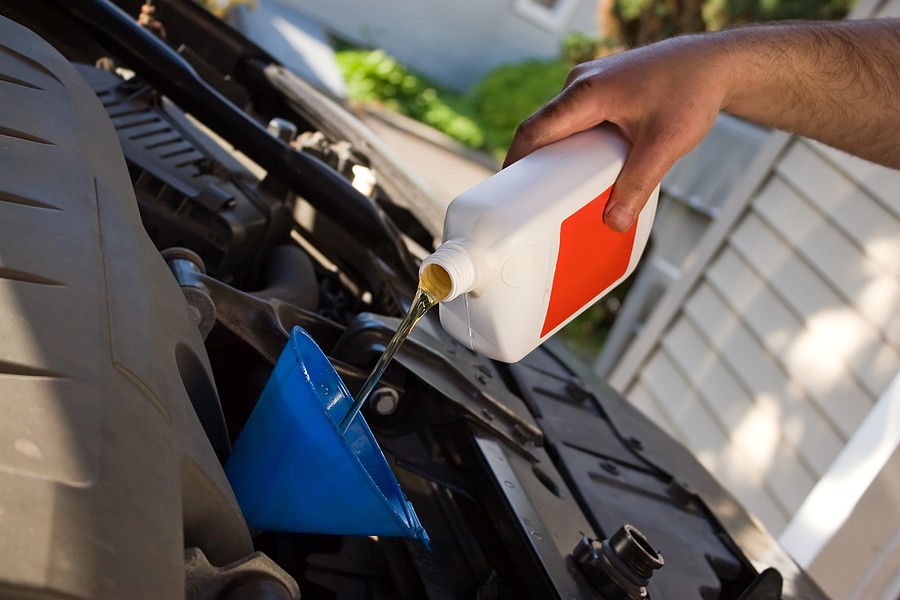If you're searching for “how to know if coolant is in oil,” Below are the most common signs:
- Milky appearance
- Abnormal oil texture
- Engine overheating
- Sweet order
- White smoke
Both oil and coolant are responsible for maintaining the engine temperature and preventing overheating. Coolant reduces the engine by running around and taking the extra heat from it. At the same time, oil reduces the engine temperature by lubricating the internal components and preventing overheating.
Although both fluids are doing the job of preventing engine overheating, they're not supposed to get mixed together. Otherwise, none of them can do the job, and the engine will overheat if not self-destructive.
Unfortunately, there are some scenarios where you might deal with a vehicle with coolant mixed with oil. When this happens, you must address the problem as soon as possible to avoid dealing with costly repairs that might cost you the entire engine.
This article provides a comprehensive guide to help you understand the problem of getting coolant mixed with oil, identify the initial early symptoms, understand the causes, implement the right solutions, and prevent the problem from happening in the future.
Why is it a problem to get coolant mixed with oil?
Before we dive into the details about “how to know if coolant is in oil,” it is important for you to understand why it is a problem in the first place to have coolant mixed with oil.
As we indicated before, the coolant and oil maintain the engine temperature. However, each of those fluids has its characteristics, and if they get mixed, the characteristics will be gone; therefore, none of them will be able to perform the right job.
That's why whenever coolant gets mixed with oil, your vehicle can suffer from significant problems and might lead to engine self-destruction in no time. Therefore, it is critical for you as a car owner to prevent this problem from happening but at the same time detect it as early as possible to resolve it without needing to replace major components.

How do we know if coolant is an oil? The main signs
Now you have a general idea about what could go wrong if the vehicle gets mixed with oil; the next step is understanding the early symptoms you should look for when you suspect the colon got mixed with oil.
The following list provides the most common signs to help answer the question, “How do you know if coolant is an oil?”
1. Milky appearance
The first and easiest way to check if the call got mixed with oil is to inspect the oil's appearance. Typically, you know how the motor oil should look like, and it never should have some bubbles or any Milky appearance. If this happens, you're dealing with a coolant mixed with oil.
If you don't know how to check the appearance of your oil, you can open the oil cap and look at the bottom of this oil cap. If there is any potential symptom of such an appearance, you must check what's causing the oil to get mixed with coolant.
2. Abnormal oil texture
Even if the Milky appearance has not formed yet, if the oil does not have the right texture, it might indicate early symptoms of coolant mixing with the oil. Therefore, you should not ignore this problem; you must consult your mechanic immediately.
3. Engine overheating
Since both coolant and oil are responsible for maintaining the engine temperature, one of the things that could go wrong when they get mixed together is engine overheating.
Engine overheating is a very general problem, and it happens. You cannot immediately assume that it's oil getting mixed with coolants; therefore, you must rely on additional symptoms to help confirm that outcome.
4. Sweet order
Coolant is known to have a very unique odor that's mostly like a sweet Maple syrup. If you realize this smell as you get inside the car, it might indicate A coolant leak, linked to coolant getting mixed with oil and impacting the pressure within the pathways of the coolant and oil.
Again, the order you might notice can be very general, which means the problem could be linked to coolant getting mixed with oil and to a general coolant leak due to other problems.
5. White smoke
Finally, when your coolant gets mixed with oil, especially within the cylinders, you'll notice that the smoke from the tailpipe will have a wide, strong color.
Typically, the exhaust smoke should not have a visible color unless you're driving an old car or you're starting the vehicle in the early morning. However, if you feel this is a continuous problem, it might indicate that your coolant is getting on the oil's side.

What causes coolant in oil?
Now you have a general idea about what to expect when the phone gets mixed with oil; the next step is identifying the potential causes. By understanding the causes of coolant getting inside the oil, you might be able to prevent the problem from happening shortly.
The list below provides you with the most important causes for coolant getting an oil:
1. Blown head gasket
The most common reason why your coolant might get inside the oil is when you have a blown head gasket. The head gasket is a very thin metal component sitting on top of these cylinders to prevent fluids from getting inside the cylinders and the hot gases from leaving the cylinders to the surrounding components.
When the head gasket blows up, these fluids enter the cylinders and get mixed spirit. When this happens, it will not be a local problem only inside the cylinders, but it can also evolve to get the coolant and oil mixed throughout the pathways.
2. Cracked engine block
In addition to the blown head gaskets, if your engine is suffering from a cracked engine block, that could be another potential cause for your cooling getting inside the oil. When the engine block is cracked, it might allow coolant to leak outside the engine and also can allow the oil to get inside the coolant pathways, which is something severe that might lead to severe problems.
That's why automotive experts have never recommended continuing to drive your car if it has a visible and clear engine crack. Sometimes, the crack can be minor, which means that the other problems might start happening slowly, but over time, they can evolve and lead to severe damage.
3. Faulty intakes
The different intakes around the engine and the cylinders can also be a source for causing your coolant to leak inside the oil. If they're not sealed properly or have any problems, they might lead to some vacuum and additional breaks in the seals that could get both fluids mixed.
Unfortunately, when you have faulty intakes, the problem might not be limited to mixing the coolant with oil. Still, it can also lead to engine misfiring and other potential problems that might be more costly than fixing a coolant mixing with oil.
4. Cooler or heater core problems
Finally, simple problems in the cooler or heater core can also allow your coolant and oil to mix. Therefore, if you feel that they are not working properly and if you're a mechanic confirmed it's a problem, you have to replace them immediately before things get out of hand.

How do you prevent getting coolant mixed with oil in the future?
Since the coolant mixing with oil is not a simple issue and can be very severe, it's important for you, as a car owner, to understand and learn about all potential recommendations that could help me prevent this problem from happening.
The following list summarizes the most important recommendations by owner experts that could help you prevent getting your coolant in the oil:
- Keep up with regular maintenance
- Never underestimate minor symptoms of coolant in oil
- Change the coolant if it's not at the top quality
- Inspect the different components that could lead to coolants getting mixed with oil

How to know if coolant is in oil: Conclusion
But both coolant and oil are important fluids to your vehicle that maintain the engine temperature and prevent overheating. While these fluids are responsible for this particular job, they're not supposed to get mixed because each has its characteristics. Once mixed, they cannot do the right job or prevent engine overheating.
This article highlighted everything you need to know to help you answer the question, “How do you know if coolant is in oil?” It provided the main symptoms, causes, solutions, and future prevention.
You must address the problem as soon as possible before things get very complicated and before you deal with the severe damage that might cost you your vehicle.
If you're interested in similar posts, we highly encourage you to visit our blog by clicking here.



